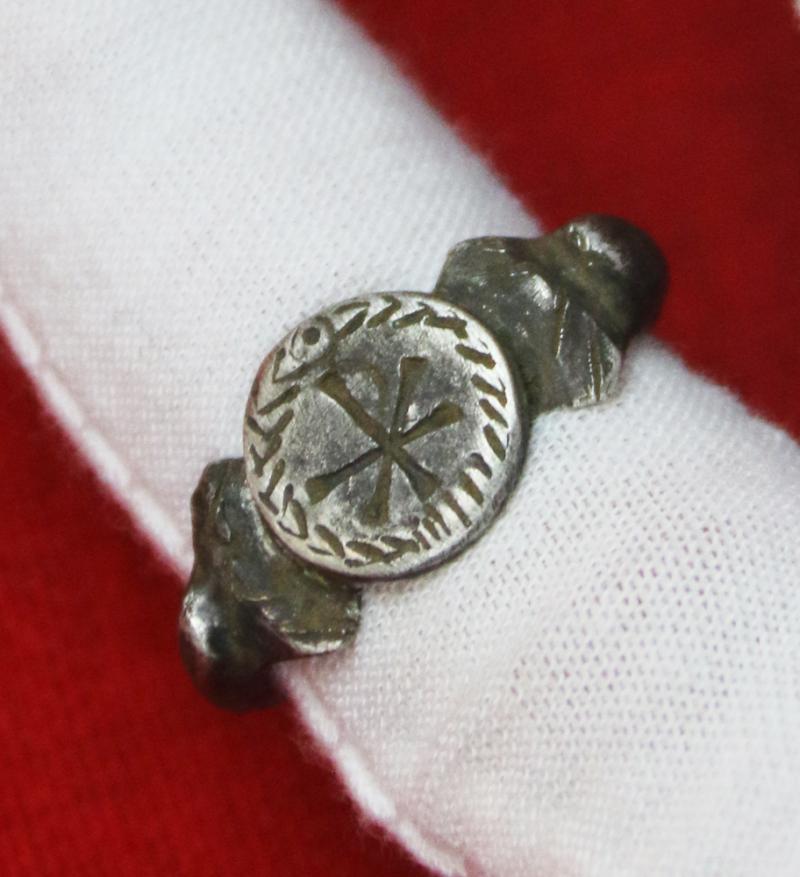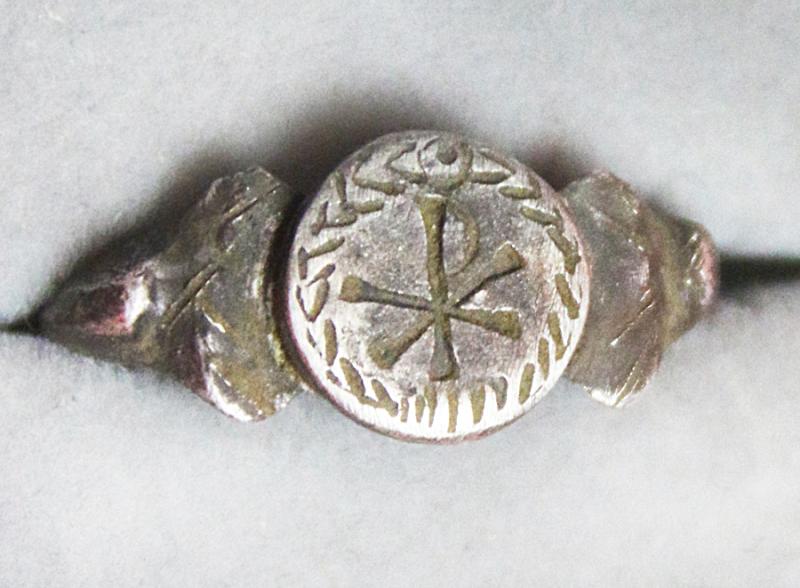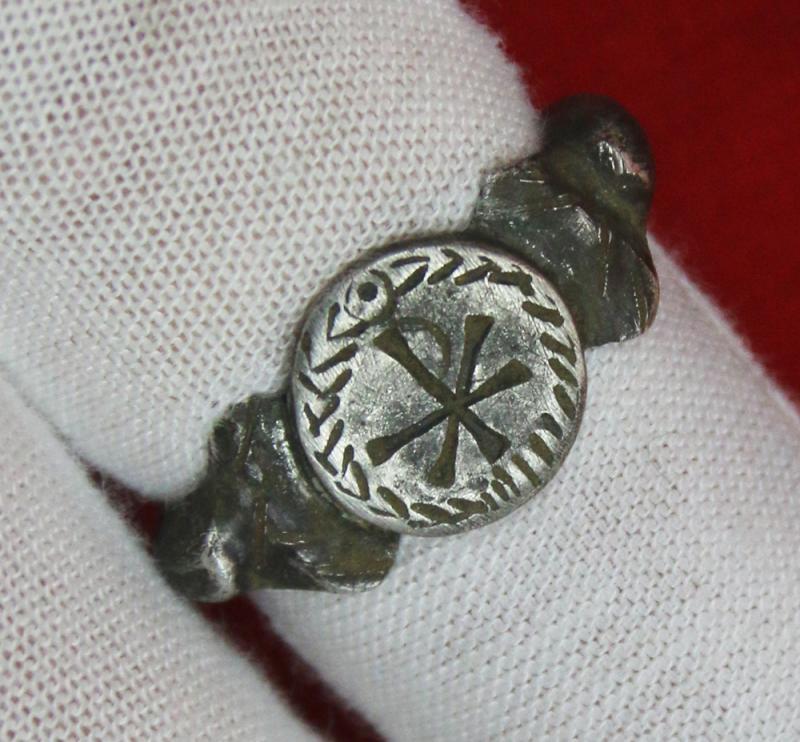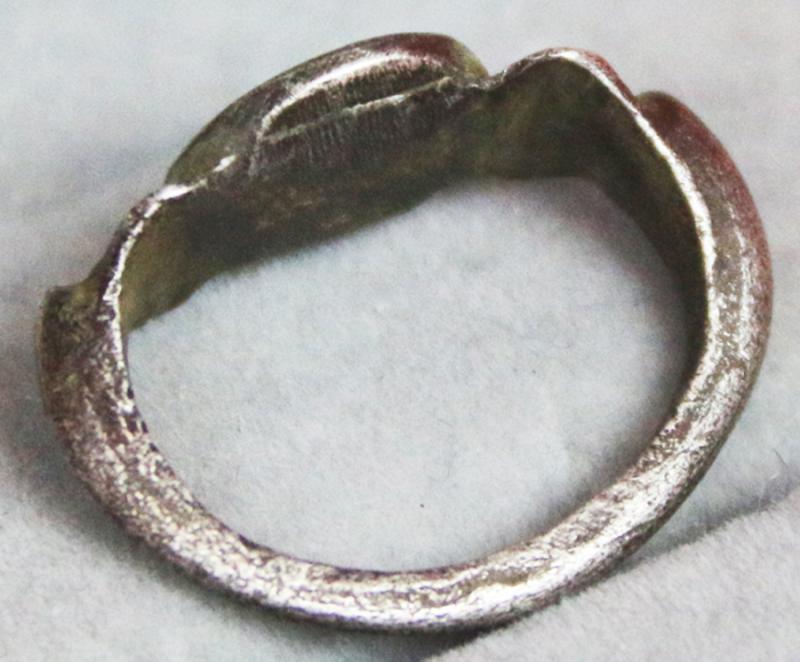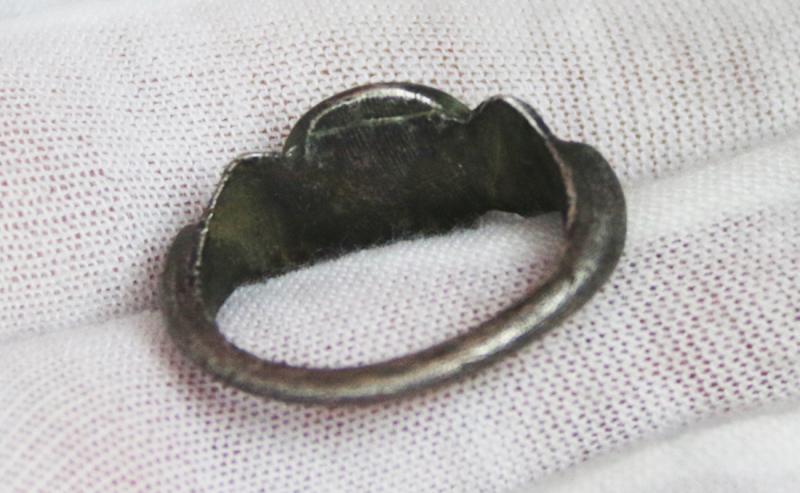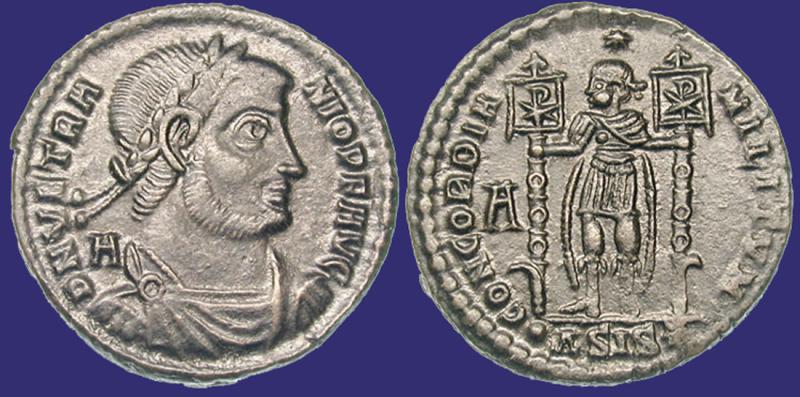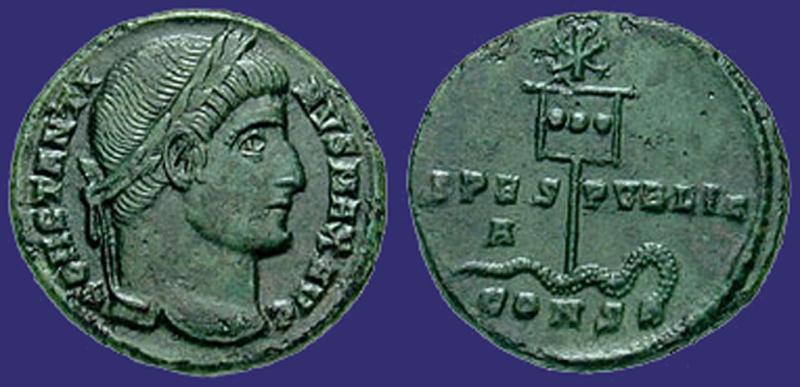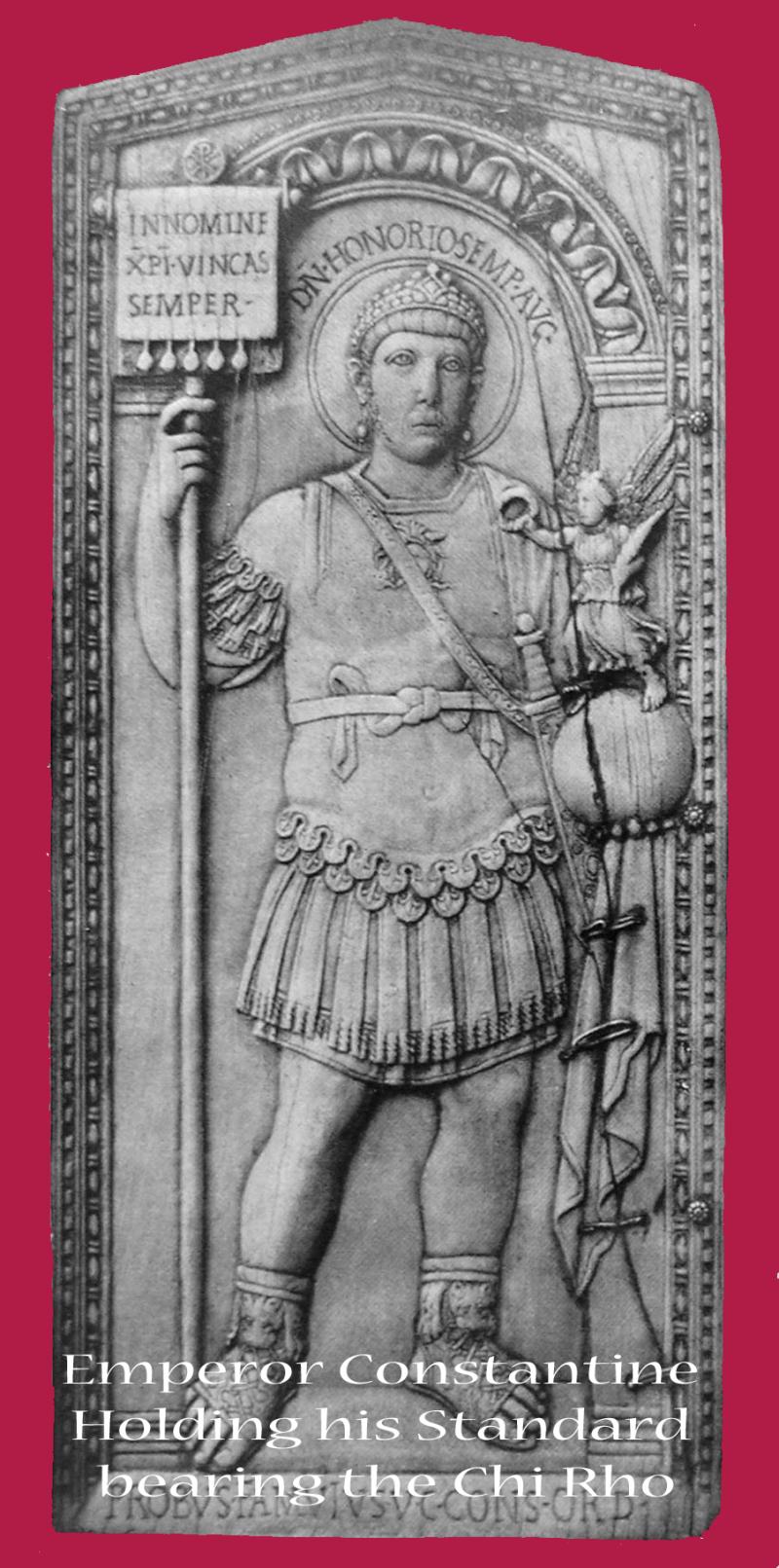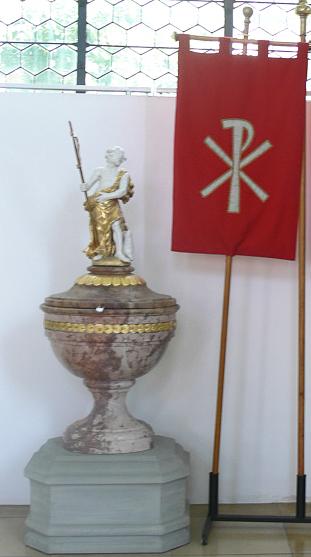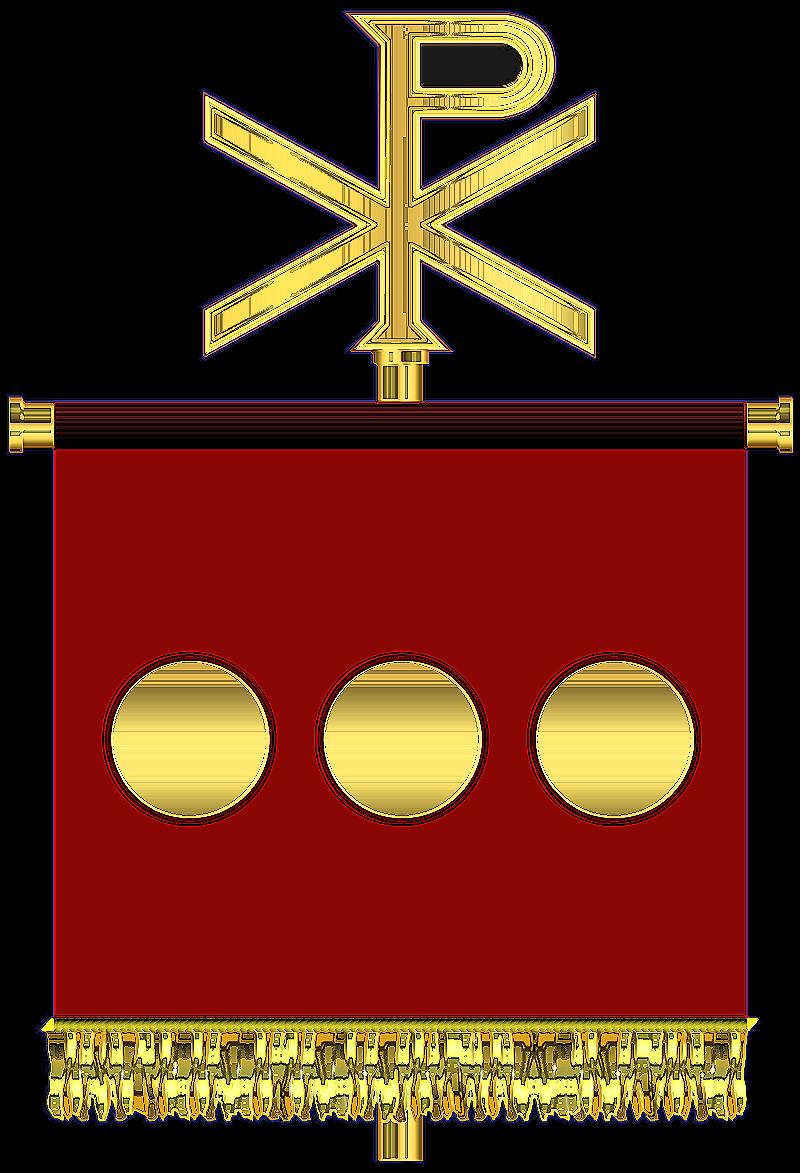A Stunning Rarity, A Solid Silver Roman Military Ring, Possibly of a Tribune or Legatus, or Even the Personal Guard of the Emperor Contantine Ist, of the Roman Empire. Engraved with the Personal Wreathed Labarum Standard of Constantine the Great
Engraved with the Personal ‘Wreathed Labarum’ Standard of Constantine the Great.
A Labarum engraved ring of Constantine Ist's Military standard showing the symbol 'Chi Rho' surrounded by the victory symbol laurel wreath. As it is a solid silver ring it likely demonstrates it was awarded and worn by an Imperial Roman military commander of high rank. Roman bronze rings and bracelets were awarded and allowed to be worn by the Legionary or Centurion, but the silver grade was only for the ranks of such as the Centurion, Tribune or Legate. Plus, as the Emperors symbol is framed in the engraving within a laurel wreath of victory, it may most likely have been awarded to the highest rank of Tribune [a wide stripe Tribune] or, a Legate, after a great victory in combat. Possibly after the Battles of Livium Bridge against Maxentius and the Battle of Chrysopolis against Emperor Licinius in the East, The religious aspect of the conflict was reflected in Licinius drawing up his battle lines with images of the pagan gods of Rome prominently displayed, whilst Constantine's army fought under his talismanic Christian standard, the labarum. Licinius had developed such a superstitious dread of the Labarum he forbade his troops from attacking it, or even looking directly at it.
Constantine’s saw his divine message from Christ, it was;
‘In hoc signo vinces’ – “In this sign, you will win”
The Labarum was a square legion's banner of the 4th century Roman Empire, with golden fringes, hung on a cross beam, on which was embedded the Chi-Rho Christogram, and sometimes also the image of Christ in purple and gold. It was introduced by Emperor Constantine the Great. It was the banner of the Roman legions but used only when the emperor was with the army.
According to an account by Eusebius of Caesarea, before the battle at the Milvian Bridge (October 28, 312 CE) Constantine the Great had a vision that allowed him to win. Around noon, he was to see a luminous cross in the sky, and under it, an inscription in Greek – “You will overcome this”. Better known in Latin translation In hoc signo vinces – “In this sign, you will win”. The next night in a dream, Christ commanded him to use the sign of the cross against his enemies. Eusebius then describes labarum (legionary’s banner) with the sign of Chi Rho.
The Labarum, became the sacred military standard of the Christian Roman emperors, first used by Constantine I in the early part of the 4th century AD. The Labarum—a Christian version of the vexillum, the military standard used earlier in the Roman Empire—incorporated the Chi-Rho, the monogram of Christ, in a golden wreath atop the staff. The flag was made of purple silk (purple dye being at this time a rarity derived from a shellfish of the genus Murex) richly embroidered with gold. Although usually suspended from a horizontal bar, it appears to have been displayed occasionally by fastening one of its sides to its staff.
Constantine was the first emperor to convert to Christianity. He ended the policy of persecuting Christians and in 313 CE issued the Edict of Milan, proclaiming the freedom to profess this religion.
A silver ring of a hoop form, with nicely shaped shoulders, circular bezel nicely engraved with the Emperor's Chi Rho cross, within a laurel wreath roundel. In the gallery is the Labarum of Constantine I, reconstructed from the depiction on a follis Roman coin, minted c. 337. The three dots represent "medallions" which are said to have shown portraits of Constantine and his sons. plus another Roman coin showing his standard, an artistic representation of the Emperor's Labarum, and an original roman carved marble panel, showing Emperor Constantine holding his personal standard adorned with his Chi Rho symbol at the very top.
Battle of Milvian Bridge, (October 28, 312 CE), major battle in a Roman civil war between Constantine I and Maxentius. After the collapse of the Roman Empire’s Second Tetrarchy, Constantine and Maxentius asserted competing claims to the imperial throne. At Maxentius’s goading, Constantine invaded the Italian Peninsula. A lightning campaign saw Maxentius killed in battle at the Milvian Bridge on the outskirts of Rome. Constantine’s victory confirmed his role as ruler of the Western Empire. According to ancient sources, Constantine converted to Christianity just before the battle. The Battle of the Milvian Bridge may have concluded Constantine’s civil war with Maxentius, but it was not his final battle. In the East, Licinius conquered his rival Maximinus Daia’s lands. However, he held them only briefly before Constantine invaded, first in 314 and again in 316. Constantine seemingly eschewed any subtlety of manoeuvre, he launched a single massive frontal assault on Licinius' troops and routed them.[6][8] He won a decisive victory in what was a very large-scale battle. According to the fifth-century historian Zosimus, “There was great slaughter at Chrysopolis.” Emperor Licinius was reported to have lost 25,000 to 30,000 men, with thousands more breaking and running in flight. Licinius managed to escape and gathered around 30,000 of his surviving troops at the city of Nicomedia.
Recognising that his surviving forces in Nicomedia could not stand against Constantine's victorious army, Licinius was persuaded to throw himself on the mercy of his enemy. Constantia, Constantine's half-sister and Licinius' wife, acted as intermediary. Initially, yielding to the pleas of his sister, Constantine spared the life of his brother-in-law, but some months later he ordered his execution, thereby breaking his solemn oath. This occurred because Licinius was suspected of treasonable actions, and the army command pressed for his execution. A year later, Constantine's nephew, the younger Licinius, also fell victim to the emperor's anger or suspicions. He was executed in 326 and had his name expunged from official inscriptions.
In defeating his last foe, Licinius, Constantine became the sole emperor of the Roman Empire; the first such since the elevation of Maximian to the status of Augustus by Diocletian in April 286. After his conquest of the eastern portion of the Roman Empire, Constantine made the momentous decision to give the east its own capital, and the empire as a whole its second. Constantine was now the undisputed ruler of the entire Roman Empire. As thanks for his good fortune and proof of his conviction, he would make Christianity the state’s most favoured religion. But Constantine would also abandon the city whose conquest had cemented his conversion. The capital would be relocated east to the city of Byzantium (renamed Constantinople, modern Istanbul). Rome would be left to crumble, and with it the Western Empire.
As with all our items it comes complete with our certificate of authenticity
Code: 24628
1250.00 GBP

